Menu
Physics Lesson 14.1.5 - Methods of Charging Objects
Please provide a rating, it takes seconds and helps us to keep this resource free for all to use
Welcome to our Physics lesson on Methods of Charging Objects, this is the fifth lesson of our suite of physics lessons covering the topic of Electric Charges. Conductors and Insulators, you can find links to the other lessons within this tutorial and access additional physics learning resources below this lesson.
Methods of Charging Objects
Objects can be charges through three possible methods, which we will explain in this paragraph.
a) By contact
This method is applied when both materials are conductors and at least one of them is electrically charged. After placing the two objects in contact, the extra charge flows between them until the balance is established. This means by the end of process, both objects will have the same type of extra charge.
For example, if two identical objects are charged as shown in the figure,
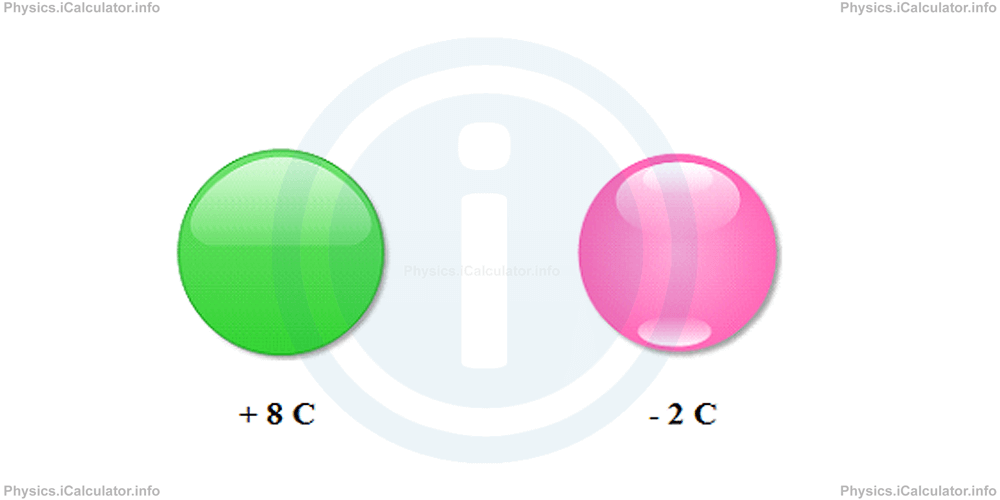
the distribution of charge after the contact will be such that each object has
= +8 C + (-2) C/2
= +3 C
after the contact, as shown in the figure below.
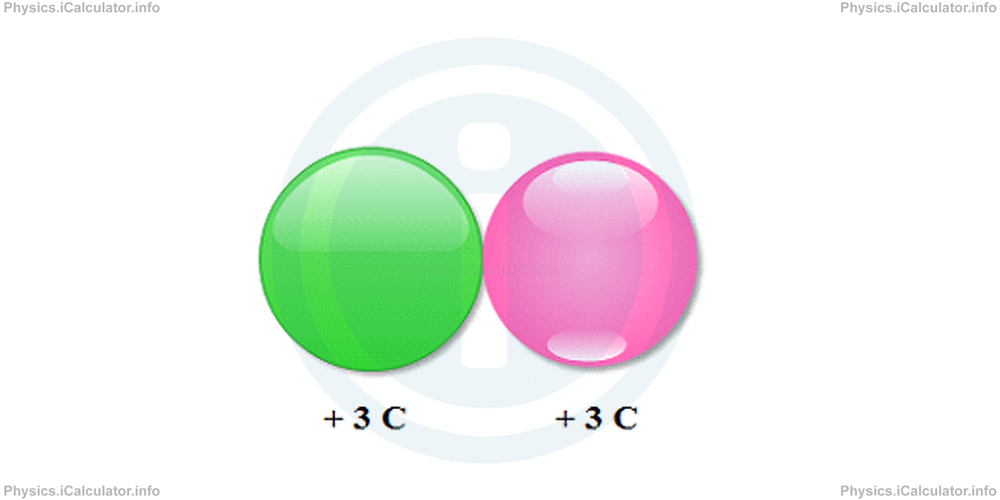
Therefore, the amount of charge that has flowed between objects is 5 C of negative charges flowed from the second to the first object.
Obviously, when objects have different dimensions or when they are made from different materials, the charge distribution is not simply the arithmetic mean as it was in the above example.
b) By induction
Induction is the second method of electrisation. It consists on bringing a charged object near a neutral one. The charged object attracts the unlike charges and repels the like charges of the neutral object. As a result, the neutral object is charged locally by opposite signs as shown in the figure.
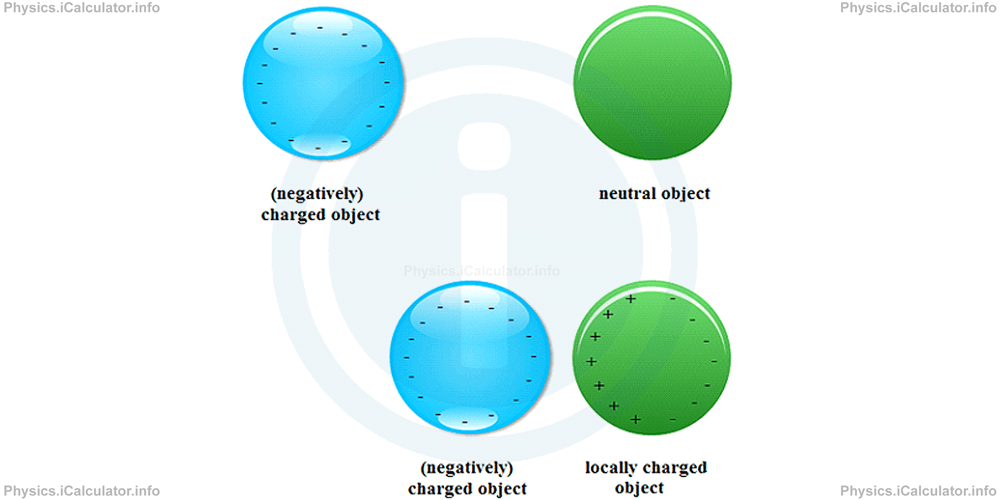
However, this method has a serious drawback. When the charged object is moved away, the electric charges in the locally charged object go back to the original positions and the object becomes again neutral in all its parts. In order to produce a permanently charged object, we can connect the part of the object which contains the undesired charges to the ground through a conducting wire. Such an action, balances the electric charges in that part of the object as charges flow between the Earth and the object until the object becomes neutral in that side. Then, we move away the charged object after removing the wire from the grounded object. In this way, the former locally charged object remains permanently charged by the same type of charge (here positive).
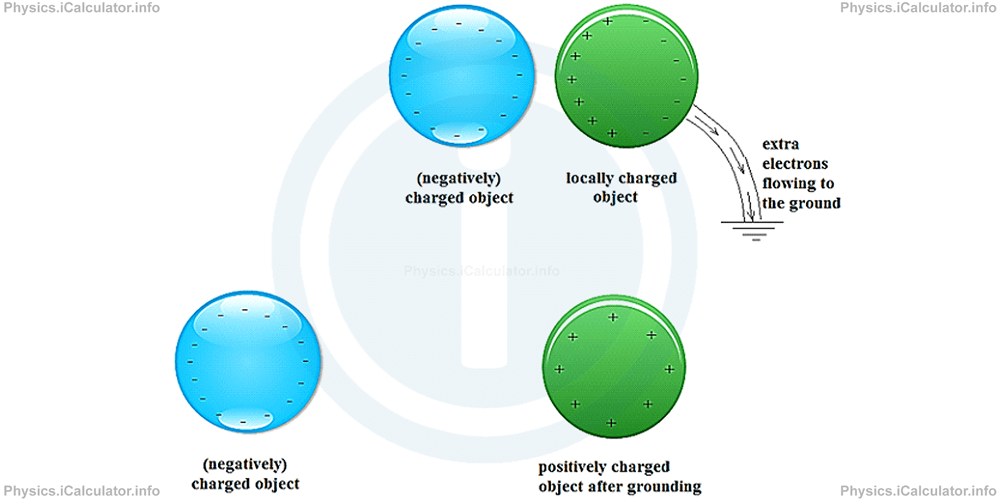
In reality, the main purpose of grounding process is not to produce extra charges of the same type in a locally charged object but to make a charged object neutral by allowing extra charges to flow from the object to the ground or vice-versa. This prevents hazards created due to the excessive extra charges accumulated in any faulty electrical appliance or cable.
c) By friction (rubbing)
This method consists on rubbing with each other two insulators made from different materials. For example, when we rub a plastic material (ruler, balloon etc., as mentioned in the introduction paragraph) with another insulator (any stringy one, such as hair, woollen cloth, etc.), the objects become both charged but with opposite signs. This occurs due to the prolonged dynamic contact between objects, which removes some electrons from one object and sends them to the other.
As stated above, despite being both insulators, the objects must have different characteristics: one must be more disposed to expel electrons and the other to host them. For example, the stringy objects release electrons and become positively charged while the plastic objects get electrons, becoming negative.
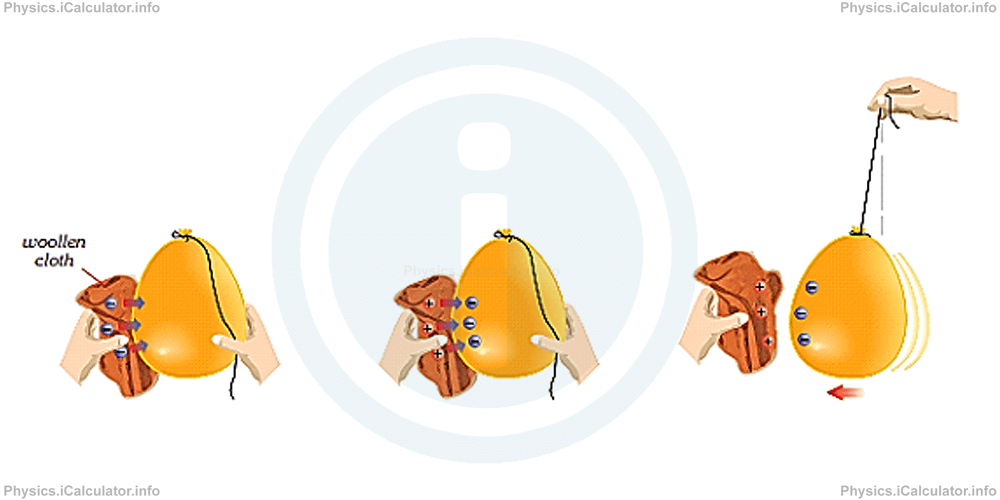
You have reached the end of Physics lesson 14.1.5 Methods of Charging Objects. There are 8 lessons in this physics tutorial covering Electric Charges. Conductors and Insulators, you can access all the lessons from this tutorial below.
More Electric Charges. Conductors and Insulators Lessons and Learning Resources
Whats next?
Enjoy the "Methods of Charging Objects" physics lesson? People who liked the "Electric Charges. Conductors and Insulators lesson found the following resources useful:
- Methods Feedback. Helps other - Leave a rating for this methods (see below)
- Electrostatics Physics tutorial: Electric Charges. Conductors and Insulators. Read the Electric Charges. Conductors and Insulators physics tutorial and build your physics knowledge of Electrostatics
- Electrostatics Revision Notes: Electric Charges. Conductors and Insulators. Print the notes so you can revise the key points covered in the physics tutorial for Electric Charges. Conductors and Insulators
- Electrostatics Practice Questions: Electric Charges. Conductors and Insulators. Test and improve your knowledge of Electric Charges. Conductors and Insulators with example questins and answers
- Check your calculations for Electrostatics questions with our excellent Electrostatics calculators which contain full equations and calculations clearly displayed line by line. See the Electrostatics Calculators by iCalculator™ below.
- Continuing learning electrostatics - read our next physics tutorial: Coulomb's Law
Help others Learning Physics just like you
Please provide a rating, it takes seconds and helps us to keep this resource free for all to use
We hope you found this Physics lesson "Electric Charges. Conductors and Insulators" useful. If you did it would be great if you could spare the time to rate this physics lesson (simply click on the number of stars that match your assessment of this physics learning aide) and/or share on social media, this helps us identify popular tutorials and calculators and expand our free learning resources to support our users around the world have free access to expand their knowledge of physics and other disciplines.